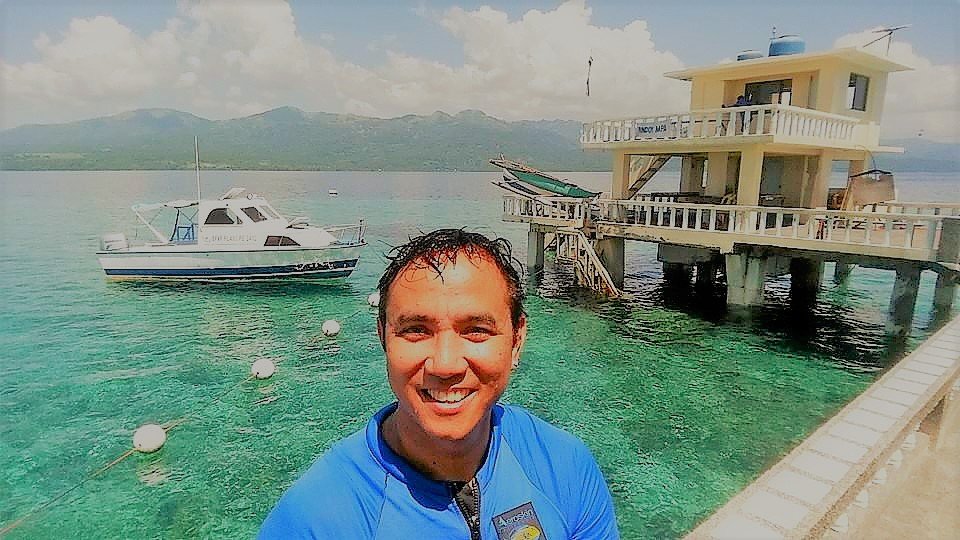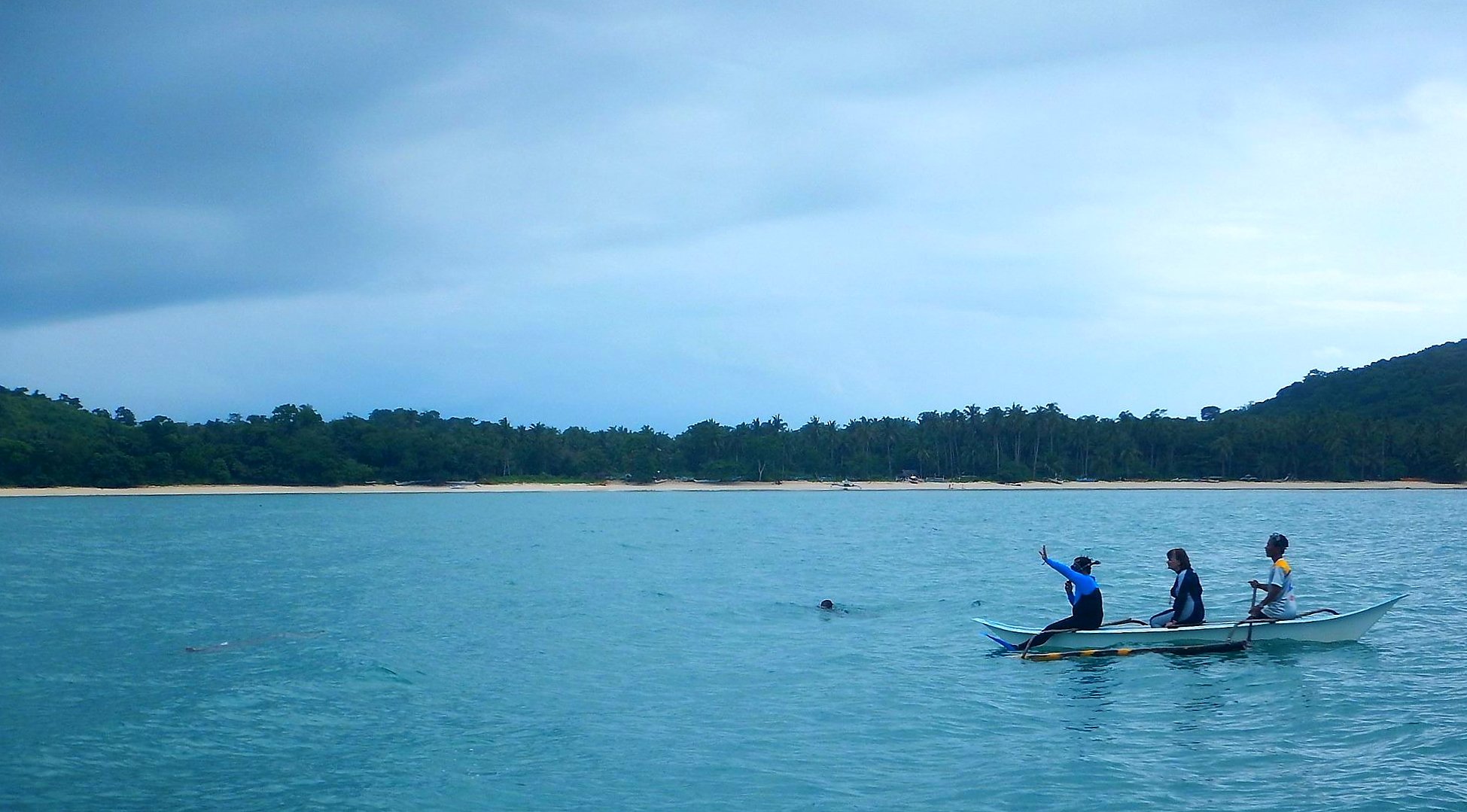by Jo. Florendo B. Lontoc
Marine mammals—such as whales, dolphins, dugongs—are descended from ancestors that lived entirely on land. Fleeing from terrestrial competition, they turned to the waters and the vast resources of its depths.
The Philippines is rife with marine mammals, a fact confirmed by stranding incidences—more than 800 recorded since 2005—exceeding the normal numbers in the region.
Professor Lemnuel Aragones is UP’s foremost expert on marine mammals and heads its only laboratory for marine mammal research. This research includes processing strandings. Though unfortunate and still largely unexplained, strandings provide the opportunity for closely studying marine mammals in their environment.
When not responding to or saving stranded marine mammals, or doing office, mentoring and laboratory work in UP and various training venues, or Skype-meeting with colleagues, Lem is farther offshore, swimming with grazing dugongs of Busuanga, Palawan, or spotting dolphins at Tañon Strait in central Visayas.
But Lem has not always been at sea. Like marine mammals, Lem saw his career make a decisive step from land to sea.

By the river in Africa
As a child, Lem traveled across the globe with his father, who was a consultant of the UN Food and Agriculture Organization. From 10 to 14 years old, he moved back and forth between the Philippines and Malawi, where his father taught at the Bunda College of Agriculture. He stayed at Lilongwe, the capital. Located in the Great East African Rift Valley, Lilongwe was strange land with a nature sanctuary in the middle, surrounding the Lilongwe River that drains to Lake Malawi.
Often, the car little Lem was riding in had to stop and let wild animals cross the road.
“Giraffes, elephants, zebras, and antelopes! So many!” the adult Lem excitedly recalls. But back then, he lived in a gated subdivision, guarded, and ferried in VIP vehicles. He watched from a car window. “Big animals have a certain majesty,” he says.
Malawi left him with a legacy of fascination. Returning to the Philippines, Lem was sold on a Zoology course in college. He would graduate in UP Los Baños in 1986 with a special project on bats and a non-thesis degree in Field Zoology. His graduation prize from his parents was a solo trip to Puerto Princesa, Palawan.
Lem meets a duyong
Officially an adult, he was free. In Puerto Princesa, he jumped onto fishing boats and sailed off with the crew to remote islands. As the fishermen laid out the nets, Lem would put on his mask, snorkel, and fins, and swim alone in the open sea.
One day off San Vicente, Palawan, on a second dive near the coast, he saw billows of murk rising from the bottom. As he dove deeper, a gray mass began to move in the murk. It was bigger than he. Lem frantically swam toward the boat. “Help!” he shouted, grasping an outrigger. “Shark!”
The crew saw the dark figure peek at the surface before gliding back under. “Ay, that’s a duyong!” they said.
Lem would not be eaten. The animal was simply grazing on the seagrass on the bottom, stirring up sediments.
Even as a graduate of Zoology, Lem had not heard of duyong. Returning to Los Baños, his father advised him to consult the Department of Environment and Natural Resources in Manila.
“We have dugong in the country,” the DENR officer said. The animal he saw was most likely it, but the officer could not give details. At that point, Lem vowed to study the big marine animal that had scared him so much. He ended up earning a master’s in Marine Science in UP Diliman.

Stranded, they tell a tale
Lem’s expertise on marine mammals was triggered as much by his “near-death” experience off San Vicente as by the deadly experience of dugongs stranded off Australia.
He was taking his PhD on tropical marine ecology at James Cook University and had to be stationed on the Queensland coast to study the feeding ecology of dugongs. Then a cyclone blew in, followed by reports of a massive marine mammal die-off. With a group led by top veterinarians, Lem was deployed as assistant to one of his PhD advisers and responded to the incident.
At one section of a vast white beach, Lem saw the dark cluster of dugong carcasses. They estimated the fatalities at nearly a hundred. He needed to assist in six necropsies a day. It meant gutting the carcasses and hauling away intestines. Inspecting entrails, he found traces of food only at the cloaca, the end of the digestive tract.
Checking the sea, they found the seagrasses wiped out.
Lem explains how the endless seaboard allows the dugongs no escape from cyclones and the devastation of feeding grounds. Smaller islands, such as in the Philippines, let sea animals go to the other side when storms blow in from the other, he says.
Still, the Philippine is rife with strandings.
Returning from Australia, Lem helped Ocean Adventure and the Bureau of Fisheries and Aquatic Resources to create the country’s own stranding network in 2005. Under his leadership, the network now has 3,866 responders, 80 veterinarians, and several specially trained fisheries and LGU personnel. The Philippine Marine Mammal Stranding Network or PMMSN has become a model for neighboring countries.

From the strandings, research has been done on marine toxins, bacteria, pathogens, and parasites, giving clues to disease life cycles and ecological conditions. Studies of stranding sites have offered clues to environments affecting marine mammals, including seismic, acoustic, and dynamite impact.
The pioneer remains fascinated
Acknowledging his leading role in marine mammal research and protocol-setting in the Philippines, Southeast Asian colleagues elected Dr. Lemnuel Aragones president when they formed the Southeast Asian Marine Mammal Stranding Network in 2013. Recently, the network expanded into the Asian Marine Mammal Stranding Network, of which he remains president.
Up to his neck in work, he will not be revisiting Malawi anytime soon. But up to this day, Lem goes back to Palawan. He would go to Calauit, his study site during his master’s program. Along with dugong on the coast, Calauit offers a sanctuary for safari animals imported from Africa. That way, when not swimming with the dugongs of his present, Lem visits the animals of his childhood.
Source: https://www.up.edu.ph/index.php/swimming-with-the-dugongs/
